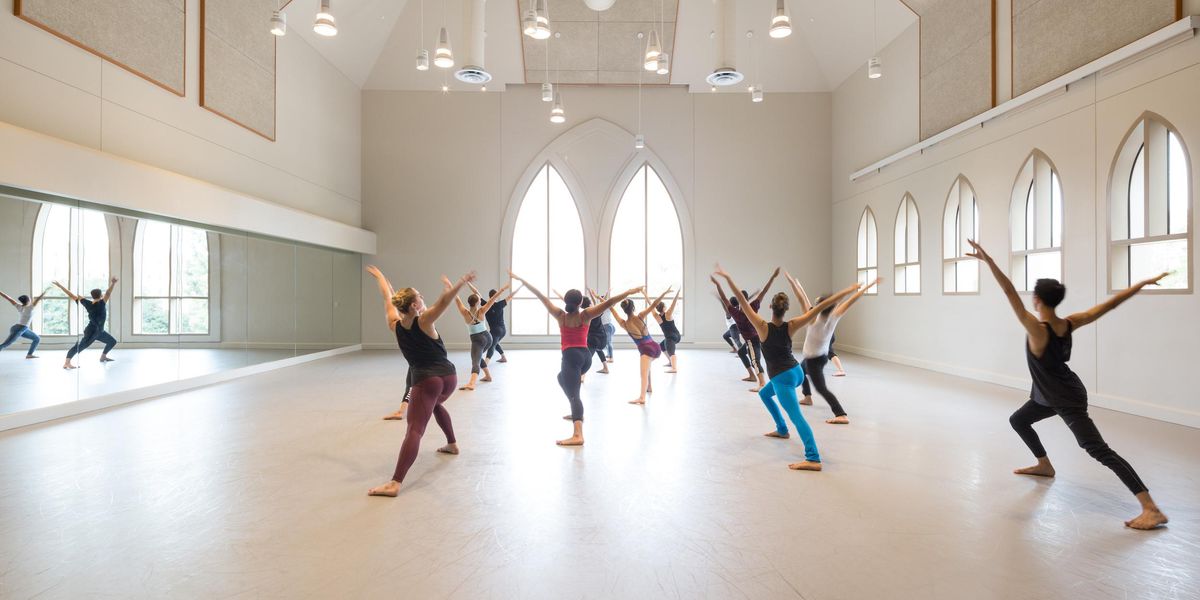In Training: Certified to Dance?
Students in class at The Ailey School. Photo by Eduardo Patino, Courtesy Ailey.
As a high school senior, Brionna Edmundson had her sights set on Alvin Ailey American Dance Theater’s BFA program at Fordham University. But after auditioning and applying, she received a rejection. Yet, Ailey’s letter came with another offer: a spot in its certificate program. “For me,” says Edmundson, “having a certificate from The Ailey School weighed more than having a degree in dance.”
For high school graduates and young professionals, certificate programs can serve as a stepping-stone to the working world. Offered by studios and schools in the U.S. and abroad, they are modeled after conservatory and college programs, but do not require students to take liberal arts courses. Unlike teacher training, a certificate in dance doesn’t actually certify students in any specialty. But it’s an option for those who want to diversify their training, boost their resumé and make connections, without the commitment of time and money that college requires.
How They Work
Most certificate programs require applicants to be high school graduates between the ages of 18 and 24, and hold auditions for admission. Once accepted, students enroll full-time for anywhere from a few months to three years, depending on the program. Tuition averages around $10,000 per year.
Curriculum is primarily dance-focused. Most programs are grounded in the school’s technique classes, supplemented by dance academics, like dance history and composition, and career counseling. In Ailey’s three-year program, certificate students follow the school’s BFA dance curriculum closely, taking most of their technique classes alongside Ailey/Fordham students. At L.A.’s Millennium Dance Complex—which offers two-month, three-month, six-month and one-year certificates—students customize their course load. With the help of director AnnMarie Hudson and a faculty advisor, dancers create a curriculum culled from its open-class schedule, which is supplemented with one-on-one time with faculty members. “I like being the dance expert who doesn’t have any agenda,” says Hudson. “We listen to what you want to accomplish, and from our experience we’ll guide you that way.”
The Next Step
While certificate programs give pre-professionals time to polish their technique, they’re also a credential that dancers can put on their resumés. “It is designed to back up students when they say that they have trained underneath us,” says Freddie Moore, faculty advisor of Ailey’s certificate program, and a graduate himself. Ailey students are evaluated regularly and must progress to advanced-level classes to receive the certificate.
The programs also give young professionals, who are learning to navigate the open class and audition world, a sense of direction and structure. Theo Van Rompay, deputy director of Anne Teresa de Keersmaeker’s P.A.R.T.S. school in Brussels, Belgium, says many American students come to its program to get to know the European dance scene. “It’s an option if they imagine having a career in Europe,” he says. “It gives enough time to collect themselves and eventually find work in Belgium or Paris or Amsterdam.”
Making Connections
All said, a certificate is not a degree. Those who choose it instead of college will miss out on traditional academics, the college experience and the chance to pursue grad school. But these programs can help dancers meet choreographers and make connections. For Edmundson, the certificate experience culminated in auditions hosted by The Ailey School—and an offer to perform in a piece by Ronald K. Brown. After graduating in 2013, she joined his company Evidence as an apprentice, before becoming a full-time member the next year. “The program was a physical and mental challenge,” says Edmundson. “The environment and the work ethic it demands helps prepare you so that when you get out, you can survive in the dance world.”
Performance Opps
While some open-class–based certificate programs like the one at Millennium Dance Complex don’t offer performance opportunities, at Anne Teresa de Keersmaeker’s school, P.A.R.T.S., students have regular performances choreographed by faculty members and students, in addition to collaborating with local and international artists. In their third year, The Ailey School’s certificate students can perform and tour with the Ailey Student Performance Group, made up of Ailey professional division students. “In the final phase of the program,” says faculty advisor Freddie Moore, “they learn what it’s like to be on the road.”




